During the Neolithic Age (8000 BCE—1400 BCE), people across various regions began to adapt to the evolving natural environment following the Ice Age. This era is characterized by the emergence of earthenware artifacts and groundstone tools and the establishment of the earliest settlements.
A consistent supply of food resources, primarily shellfish and a diverse range of finned fish, made the establishment of these settlements feasible. Notably, in Korea, archaeological evidence has unveiled the oldest stone sinkers designed for nets. According to current knowledge, these findings suggest that this fishing technique was fine-honed during this period. Even in contemporary times, fishing with nets and traps remains the most efficient method of capturing fish.
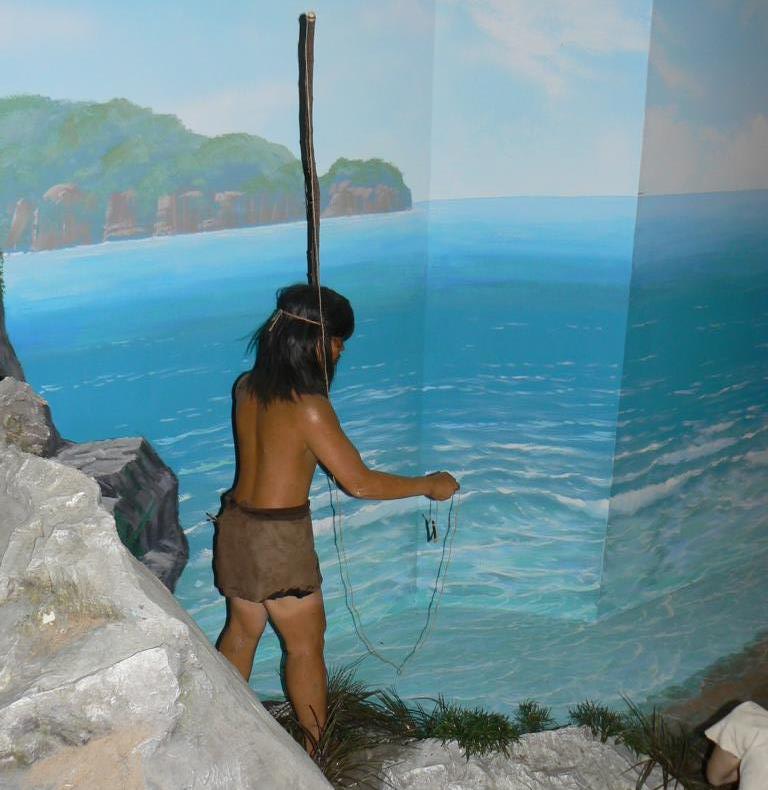

Favorable conditions for angling
On the contrary, angling is comparatively less efficient when considering the ratio of harvested energy units to the energy expended. However, its specificity in targeting particular fish species sets it apart. Moreover, it is one of the limited viable approaches to fishing in specific aquatic environments, such as untamed streams or coastlines battered by waves.
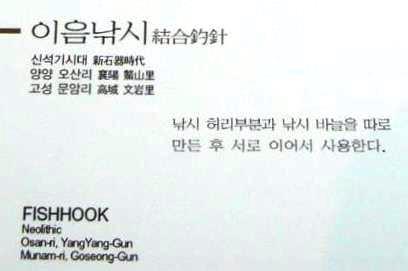
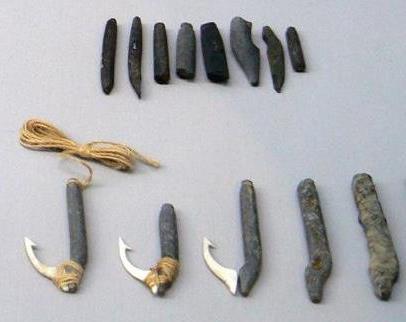
During the Korean Neolithic period, a remarkable innovation emerged. This ingenious invention involved the integration of hook and sinker functions into a single piece of equipment. The hook’s shank was crafted from stone, while the hook’s barb was intricately carved from bone. These composite fishhooks from the Neolithic era were skillfully bound together using either smoked sinew or a strand of fishing line.
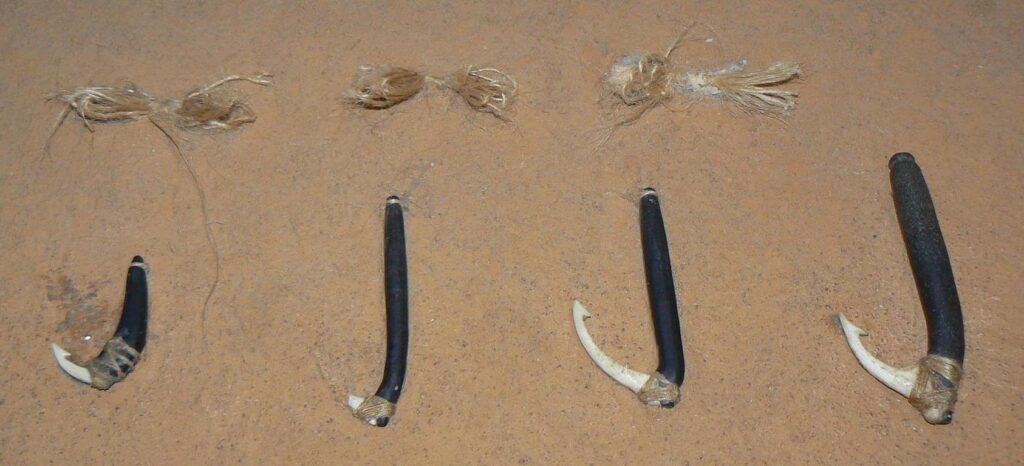
Design of composite Neolithic fishhooks in Korea
The design of these composite Neolithic fishhooks proved highly efficient. If broken off during fishing, the bone barbs could be readily replaced, contributing to the hooks’ durability. The absence of a distinct sinker also eliminated the risk of entanglement between the hook and the fishing line.
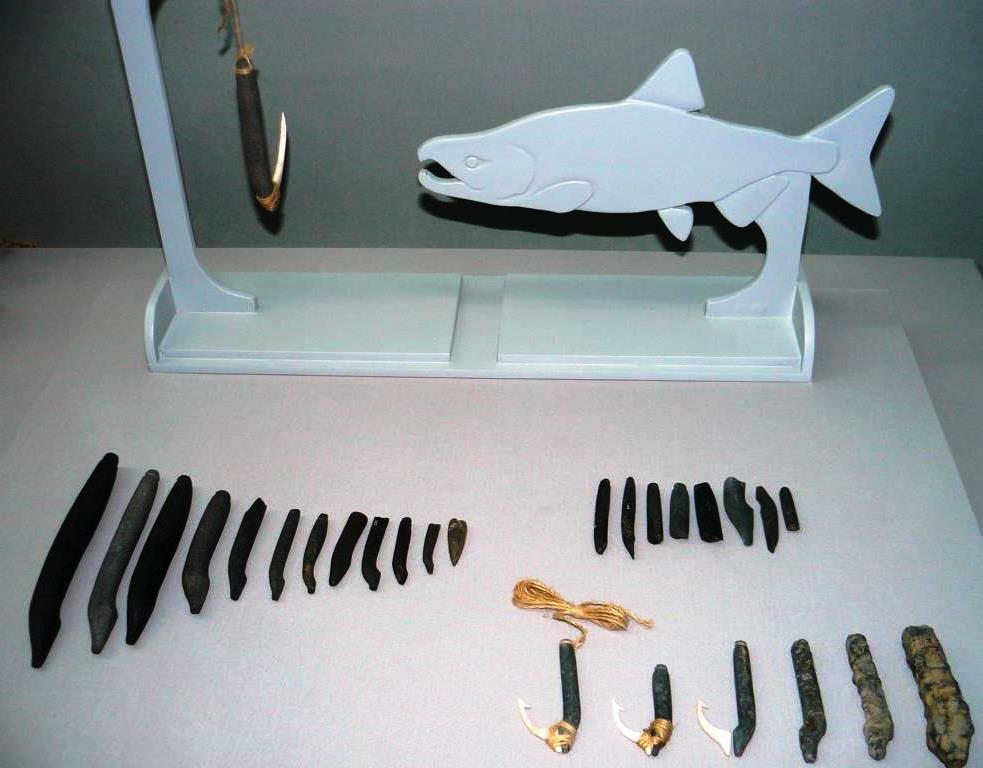
The stone shanks of these fishhooks were meticulously carved from fine-grained, dark-colored ultramafic rocks, such as peridotites and pyroxenites. These shanks possessed both graceful slenderness and substantial weight at the termination of the shank; an artfully carved groove served as an anchor for securing the fishing line’s knot.
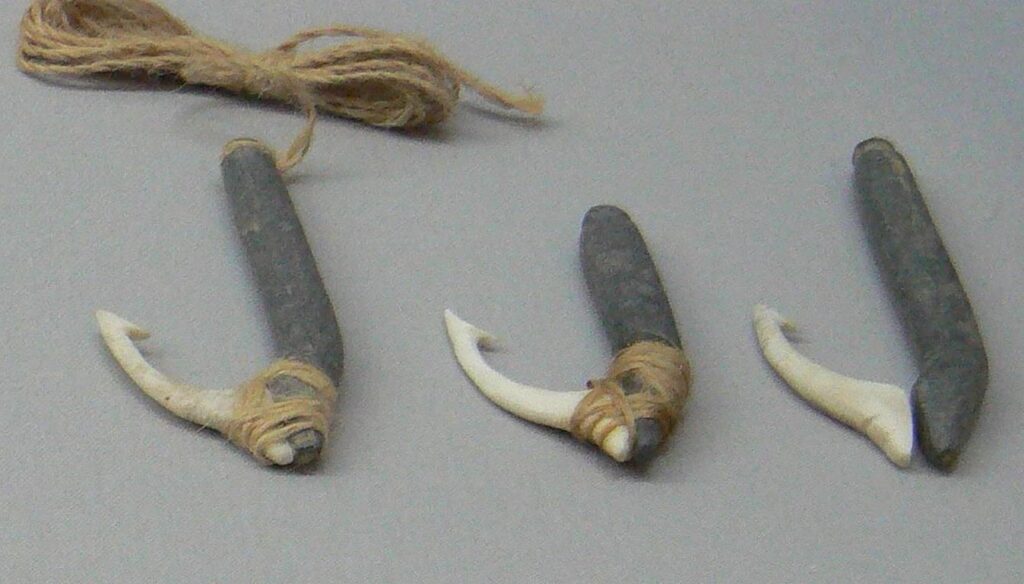
Considering their dimensions, these composite Neolithic fishhooks were presumably employed for capturing sizable fish species. This encompassed marine varieties like cod or tuna from the coast and freshwater inhabitants like salmon found in streams.
These fishhooks were discovered at the Osan-ri Prehistory Museum (오산리선사유적박물관) in Yangyang-gun, Gangwon-do. You can find more detailed information about this museum through the link here.
Lessons learned from Neolithic fishhooks in Korea
- According to current knowledge, the Korean Neolithic people were pioneers in using stone sinkers for fishing nets, a global first.
- They innovatively combined the functions of hooks and sinkers into a single piece for angling.
- The bone hook and barb design allowed for convenient replacement in case of breakage.
- These hooks were predominantly employed for capturing large fish species such as cod, tunas, and salmon.
.





